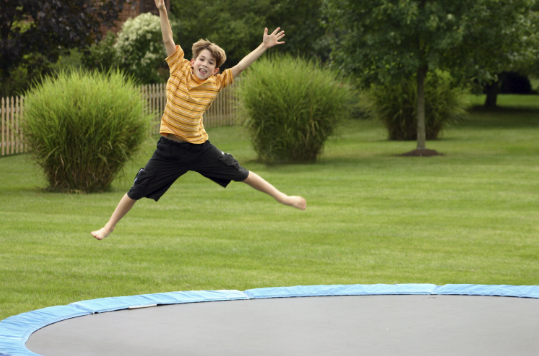LEARNING TO BOUNCE BACK
By Luke McKenna
Resilience is a crucial life skill for all of us. Whether it is a relationship ending, a poor result on an exam, a sporting fixture lost or a job application that got knocked back- we need to learn how to cope with these things. We need to use this skill often.
Life is a great teacher of resilience. And if we can manage to pull ourselves together again after a setback, it’s empowering to be able to move forward or experience some success further down the track.
Whenever I work with staff or parents, I will often ask them “what is the biggest inhibitor for student improvement that you have experienced?” Most often, it is a lack of resilience and persistence that adults have experienced in the young people they care about. People comment that it is getting worse over time too. And that makes sense…
In life, there are ups and downs. However, often parents will protect their children from anything that might knock them around a little. Lawn mower parents (going ahead of their kids to ensure the path is clear), helicopter parents (hovering over their kids).
Where do kids learn resilience if they are never allowed to experience set backs, mistakes, challenges, even failure? In our society kids can’t fall off trampolines anymore, because they all have nets on them. At birthday parties- if pass the parcel is played, every layer gets a prize. Where are we giving young people the opportunity to learn about hardship, struggle, losing and hanging in there, if everyone always wins a prize? How can we learn about getting back up, when you’re not allowed to fall down? After all, children aren’t made of china” (McCaskill, 2002).
Resilience isn’t just a concept, it’s an action- an action that happens after a feeling of disappointment. And we all need opportunities to practice it in the little things so that our first experience of “missing out” in life is not something big in our twenties. Often teachers and parents (who both really want to help children) step in too quickly to help. We say too much, or do too much, too soon. We think we are showing them that we care. But instead we are really telling them that they couldn’t do it without us (McCaskill, 2002). Sometimes it’s OK for them to sit in the discomfort of not getting it right…yet.
In order to develop resilience and persistence, we all need to be challenged by things that make us want to give up. We should keep in mind at this points that there is no sense in making kids face challenges that are way too big. There is a balance- it involves knowing when to step in to support or guide, and knowing when to keenly observe the struggle.
Rather than avoid or remove struggles for kids, we can help kids prepare for the struggle by teaching them about explanatory styles.Martin Seligmandefines explanatory styles as “the manner in which you habitually explain to yourself why events happen” (Seligman, 1990). They are the little stories we tell ourselves, to make sense of our lives and interpret our world. This is an underused, proactive approach to building capacity to help students “bounce”.
Research shows that optimists are better at bouncing back than pessimists. So how do optimists and pessimists differ in the way they interpret their world? There are 3 ways (known as the 3P’s).
· Personalisation- is this my fault (personal) or were other factors involved?
· Permanence- is this event temporary of permanent?
· Pervasiveness- is this event global (pervasive), or specific to this single aspect of my life?
The different interpretations of good or bad events are shown in the table below (adapted from Peterson, 2006):
So when kids fail a test or don’t win a prize in pass the parcel, it doesn’t necessarily mean that this result personal (“I’m a failure”), permanent (“I will always be bad at this subject”) or pervasive (“my whole life is ruined”). But by going through the 3 questions and answering honestly, most often they will find that there is a way out and that the failure is not final. McCaskill (2002) asserts that “resilient children are able to convince themselves that mistakes and failures in one area are temporary and do not mean that they don’t have skills in other areas”.
It is important to note that “optimism can have costs if it is too unrealistic” (Peterson, 2000). Seligman also cautions individuals to avoid optimism if you are trying to plan for a risky or uncertain future (Seligman, 1990). This is because pessimism helps us maintain caution, prudence and analytic thinking (which are key components to effective decision-making). Also, if optimists think that the causes of the bad events of their lives are all external and out of their control, that may be equally unhelpful as it could cause a lack of ownership and responsibility.
The goal is not to become only optimistic and forget pessimism. Instead, it is about choosing the type of explanatory style that will be most effective for a given situation.
References
McCaskill, W. (2002). Children Aren’t Made of China. Play is the Way Pty Ltd.
Peterson, C. (2006). A Primer in Positive Psychology. New York: Oxford University Press.
Peterson, C. (2000). The Future of Optimism. American Psychologist.
Seligman, M. (1990). Learned Optimism: Knopf.


